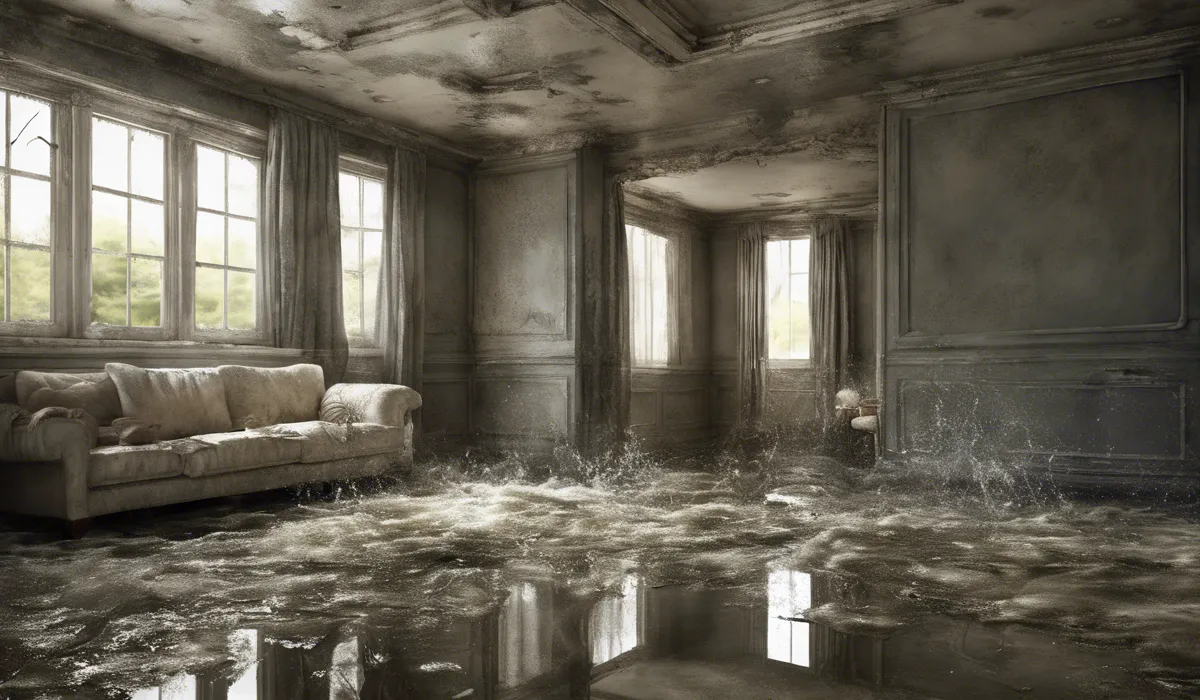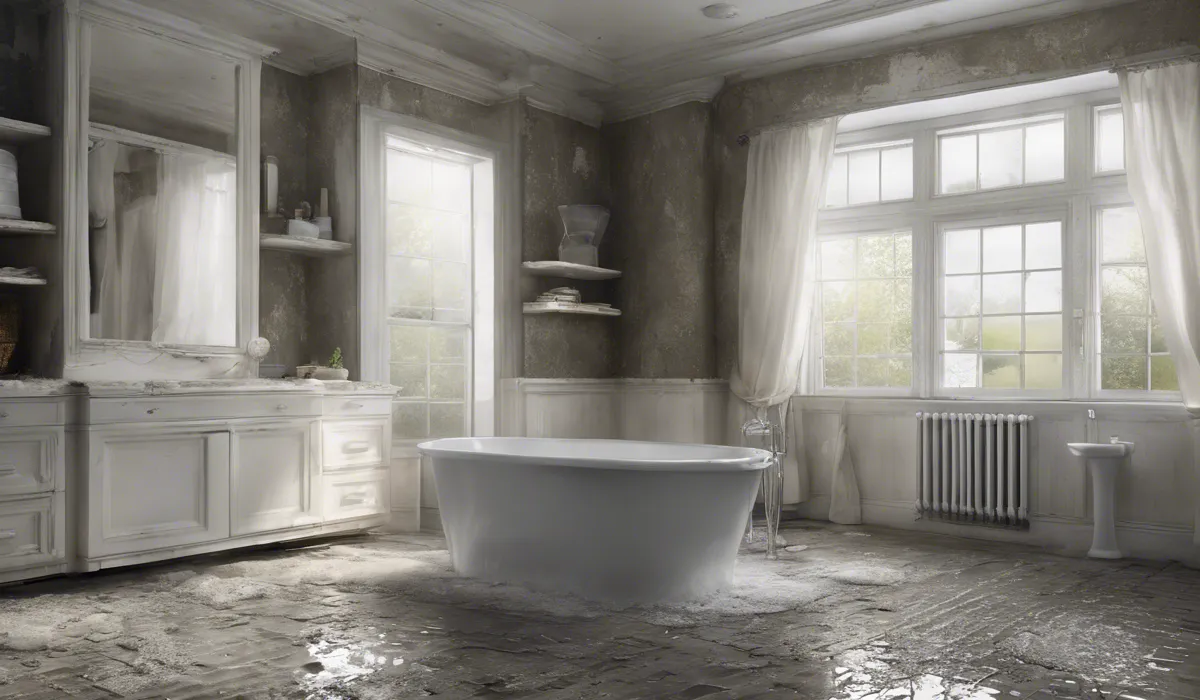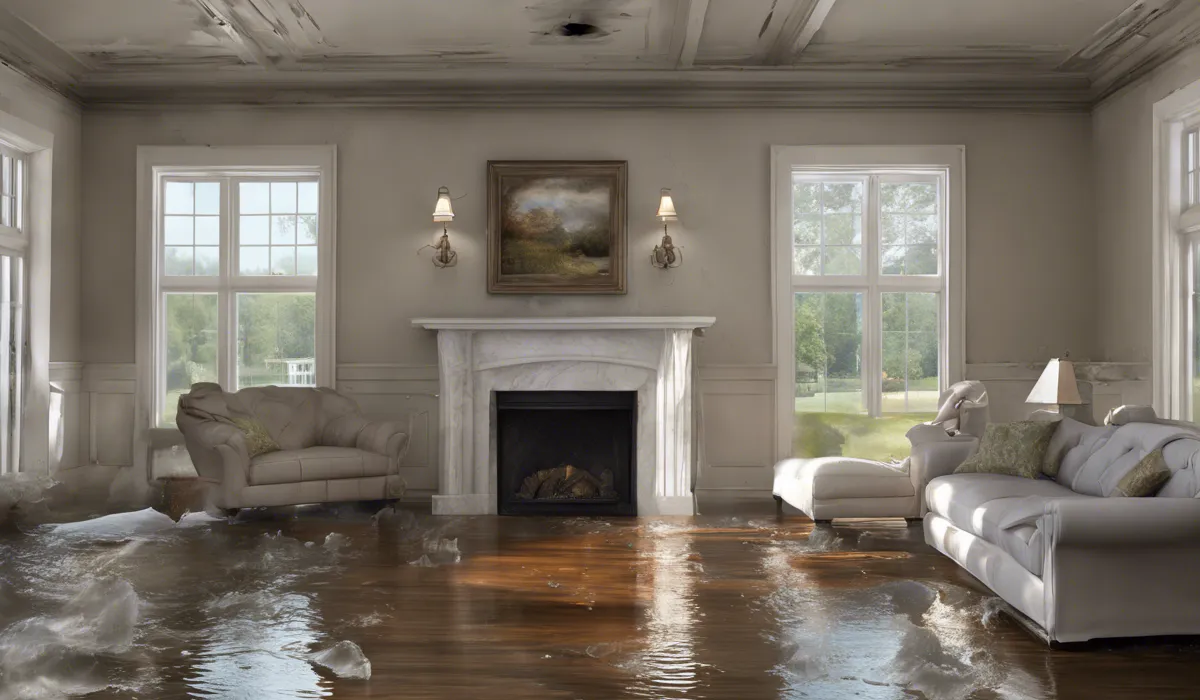Yes, water damage can cause mold. Moist environments from leaks or flooding create ideal conditions for mold spores to grow.
It typically begins within 24-48 hours of water exposure. Prompt remediation is crucial to prevent mold proliferation.
Relationship Between Water Damage and Mold Growth

Understanding Mold Spores in the Environment
Mold is a natural part of the environment, with spores floating through the air both indoors and outdoors.
These tiny spores are unseen to the naked eye and drift about, searching for the right conditions to settle and grow. They can enter homes through windows, doors, or even attach themselves to clothing and pets.
Despite their prevalence, mold spores need certain conditions to become problematic by growing into mold colonies.
Optimal Conditions for Mold Growth
To thrive, mold requires four main elements: moisture, a food source like wood or drywall, suitable temperatures, and oxygen.
Homes often provide ample food through common building materials and household dust which contains skin cells and other organic matter.
Mold grows best at temperatures that humans also find comfortable, making indoor environments a common battleground for mold proliferation.
Water Damage: A Catalyst for Mold
When water damage occurs, it disrupts the normal dryness of a home and introduces the moisture necessary for mold to grow.
This could be due to flooding, leaks, or high humidity. Water damage provides the missing puzzle piece for mold spores that are already waiting in your home, allowing them to start forming colonies and taking hold on damp surfaces.
When Does Mold Start to Grow After Water Damage?
After water damage, mold can begin to grow quickly, usually within 24 to 48 hours. This rapid growth is why immediate action is essential when dealing with water damage.
The longer water sits, the more opportunity mold has to establish itself and spread throughout your home.
Water Damage Scenarios Most Likely to Cause Mold
Some types of water damage are more likely to lead to mold growth than others. For example, flooding from rivers or rainwater is highly contaminated and can bring with it a rich array of nutrients for mold.
Similarly, persistent leaks that go unnoticed can create hidden mold havens within walls or under floors. It is these sustained, unaddressed moisture issues that pose the most significant risk for mold growth.
Health Risks and Structural Damages Caused by Mold

Mold-Related Health Concerns
Exposure to mold can lead to a variety of health issues. Individuals with allergies may experience symptoms such as sneezing, runny nose, red eyes, and skin rash.
Mold can also exacerbate asthma in those with the condition. In high exposure situations, even individuals without known sensitivities can experience irritation of the eyes, skin, nose, throat, and lungs.
Impact of Mold on Property
Mold doesn’t just affect health; it can also eat away at building materials. Over time, mold can degrade the integrity of wood, drywall, and insulation, leading to structural damage that can be costly to repair.
The presence of mold can also affect property value, making it difficult to sell a home without first addressing the issue.
Dangers of Black Mold
While all molds can cause problems, black mold, or Stachybotrys chartarum, is often singled out due to its association with more severe health risks.
This type of mold produces toxins that can lead to serious conditions such as neurological problems and pulmonary issues when humans are exposed to large quantities over time.
Long-Term Effects of Untreated Mold
If water damage and the resultant mold are not addressed promptly, the long-term consequences can be severe.
Continuous exposure to mold can lead to chronic health issues, and the structural damage to property can become extensive.
This can result in hefty repair bills and long-term health care costs, making prevention and timely remediation critical.
Prevention and Remediation Strategies

Proactive Mold Prevention Tips
Preventing mold growth after water damage is achievable with the right approach. Keep humidity levels in your home between 30-50%, fix leaks promptly, and ensure proper ventilation in high-moisture areas like bathrooms and kitchens.
Regularly inspecting your home for signs of water damage can also prevent mold from gaining a foothold.
Importance of Swift and Effective Drying
Quick action is essential in preventing mold growth after water damage. Remove standing water as soon as possible and use fans, dehumidifiers, and open windows to speed up the drying process.
Thoroughly drying affected areas within 24-48 hours can greatly reduce the risk of mold taking root.
Deciding Between Professional and DIY Mold Remediation
For small areas affected by mold, a DIY approach may be sufficient. However, for larger areas, extensive water damage, or if toxic black mold is suspected, it is best to call in professional remediation services.
Professionals have the experience, equipment, and protective gear needed to safely and effectively eradicate mold.
Understanding Professional Mold Remediation
Professional mold remediation involves several steps. The process starts with a thorough assessment, followed by containment of the affected area to prevent spores from spreading.
Afterward, specialists remove the mold and any damaged materials, clean the area with antimicrobial agents, and finally restore the space to its original condition.
Maintaining a Mold-Free Environment Post-Remediation
Once mold remediation is complete, ongoing vigilance is required to keep your home mold-free.
Regular cleaning, monitoring humidity levels, and fixing any water problems promptly are essential practices. Additionally, consider using mold-resistant products in your home renovations to provide long-term protection against mold.
FAQs About Water Damage and Mold
Can water damage in my home lead to mold growth?
Yes, water damage can lead to mold growth as it creates the perfect moist environment for mold spores to thrive.
How quickly can mold grow after water damage occurs?
Mold growth can begin within 24-48 hours after water exposure.
What should I do immediately after water damage to prevent mold?
Prompt remediation, including water removal and drying out of the area, is crucial to prevent mold from proliferating.
Can a small leak lead to a mold problem?
Yes, even a small leak can create conditions conducive to mold growth if not addressed quickly.
Is all mold that grows after water damage dangerous?
While not all mold is harmful, some types can be hazardous to health, making it important to address any mold growth after water damage.
Final Thoughts
Water damage is a catalyst for mold growth, with the risk escalating in moist conditions following leaks or floods.
Mold can start to develop within 24 to 48 hours after water exposure, making quick action essential to thwart its spread and the consequent health risks and structural damage it can cause.
